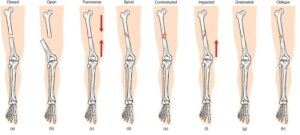Fractures are common injuries that can significantly impair function and mobility. Rehabilitation and physical therapy play a crucial role in the recovery process, helping individuals regain strength, flexibility, and mobility after a fracture. By implementing targeted rehabilitation programs, healthcare professionals can optimize outcomes and facilitate the return to pre-injury levels of function.
In this essay, we will explore the importance of rehabilitation and physical therapy following fractures, outlining key principles, interventions, and goals in the recovery process.
Understanding the Rehabilitation Process

Rehabilitation following a fracture is a comprehensive and multidisciplinary process aimed at restoring function, mobility, and quality of life. It typically involves collaboration between orthopaedic surgeons, physical therapists, occupational therapists, and other healthcare professionals. The rehabilitation process begins soon after the fracture is stabilized and continues throughout the healing and recovery phases.
Key Goals of Rehabilitation:
The primary goals of rehabilitation following a fracture include:
- Pain Management: Addressing pain is essential for optimizing function and participation in rehabilitation activities. Pain management strategies may include medications, modalities such as ice and heat therapy, and manual techniques to reduce discomfort.
- Restoration of Range of Motion: Immobilization and disuse following a fracture can lead to stiffness and loss of joint motion. Physical therapy interventions, including passive and active range of motion exercises, help restore flexibility and joint mobility.
- Strengthening Exercises: Muscle weakness and atrophy commonly occur following a fracture due to disuse and immobilization. Progressive resistance exercises targeting specific muscle groups help rebuild strength and improve functional capacity.
- Balance and Coordination Training: Fractures, particularly lower extremity fractures, can disrupt balance and coordination. Balance training exercises challenge the neuromuscular system to improve stability and reduce the risk of falls.
- Gait Training: Restoring normal gait patterns is a fundamental aspect of rehabilitation following lower extremity fractures. Gait training focuses on improving stride length, step height, weight-bearing status, and overall walking mechanics.
- Functional Activities: Rehabilitation programs incorporate functional activities and tasks relevant to the individual’s daily life and activities of daily living (ADLs). These may include stair climbing, transfers, lifting, and reaching exercises.
- Education and Self-Management: Patient education is integral to the rehabilitation process, empowering individuals to actively participate in their recovery and self-management. Education topics may include proper body mechanics, activity modification, and strategies for preventing re-injury.
Physical Therapy Interventions
Physical therapists play a central role in the rehabilitation of fractures, designing individualized treatment plans tailored to each patient’s unique needs and goals. Physical therapy interventions may include:
- Manual Therapy: Hands-on techniques such as massage, joint mobilization, and soft tissue mobilization help improve joint mobility, reduce pain, and facilitate tissue healing.
- Therapeutic Exercise: Therapeutic exercises target specific muscle groups and movement patterns to improve strength, flexibility, and endurance. Exercises may be performed using body weight, resistance bands, free weights, or specialized equipment.
- Modalities: Physical therapists may use modalities such as heat, cold, ultrasound, electrical stimulation, and laser therapy to manage pain, reduce inflammation, and promote tissue healing.
- Aquatic Therapy: Aquatic therapy involves performing exercises and activities in a pool environment, taking advantage of the buoyancy and resistance of water to facilitate movement and reduce stress on injured tissues.
- Assistive Devices: Depending on the type and severity of the fracture, assistive devices such as crutches, walkers, canes, or orthotics may be prescribed to support mobility and facilitate safe ambulation during the recovery process.
- Functional Training: Functional training focuses on improving performance in activities of daily living (ADLs) and functional tasks relevant to the individual’s work, hobbies, and lifestyle.
- Progressive Loading: Gradually increasing the intensity and duration of weight-bearing and resistance exercises helps promote tissue healing, build strength, and improve functional capacity over time.
Challenges and Considerations
Rehabilitation following a fracture may present various challenges and considerations, depending on factors such as the type and location of the fracture, the individual’s overall health status, and any underlying medical conditions. Some common challenges include:
- Pain Management: Pain can be a significant barrier to participation in rehabilitation activities. Physical therapists work closely with patients to develop effective pain management strategies and modify treatment plans as needed.
- Psychological Factors: Coping with the physical and emotional impact of a fracture can be challenging. Psychological support and counselling may be beneficial for individuals experiencing anxiety, depression, or other mental health issues related to their injury.
- Compliance and Adherence: Consistent participation in rehabilitation exercises and activities is essential for achieving optimal outcomes. Motivating patients to adhere to their treatment plan and follow through with home exercise programs can be challenging but is crucial for success.
- Complications and Setbacks: Complications such as delayed healing, malunion, or nonunion may occur following a fracture, requiring additional interventions or surgical management. Physical therapists collaborate closely with orthopaedic surgeons and other healthcare providers to monitor progress and address any complications or setbacks promptly.
Conclusion
Rehabilitation and physical therapy play a critical role in the recovery process following a fracture, helping individuals regain function, mobility, and independence. Through a comprehensive and individualized approach, physical therapists address pain, restore range of motion, improve strength and flexibility, and promote safe and effective return to daily activities.
By empowering patients to actively participate in their recovery and providing ongoing support and guidance, rehabilitation professionals optimize outcomes and enhance the quality of life for individuals recovering from fractures.










